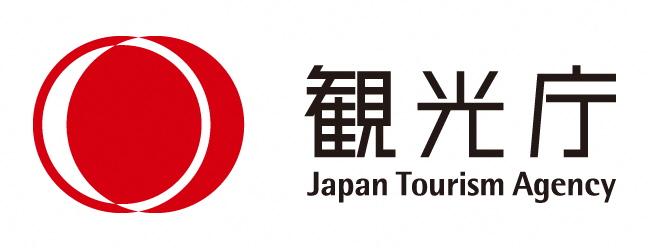NO 024
Kumagaya Uchiwa Festival
熊谷うちわ祭(熊谷八坂神社祭礼行事)
(251-500 words web)
Downtown Kumagaya is filled with sound and color for three days in July during the annual Kumagaya Uchiwa Festival. Participants from twelve local neighborhoods pull decorative wheeled floats through the streets, accompanied by live music.
Fans for soaring temperatures
The Uchiwa Festival began in the mid-eighteenth century as a series of Shinto ceremonies at Kumagaya’s Atago Yasaka Shrine to ward off disease. By the mid-nineteenth century, the festival also included a procession through the streets of Kumagaya. Families and shops would make and hand out sekihan, rice cooked with red adzuki beams, an auspicious food believed to keep away evil. Around the start of the twentieth century, local merchants began to give out uchiwa fans instead of rice. Kumagaya is one of the hottest places in the Kanto region, and the fans have become very popular. Over time, the focus of the festival has shifted from disease prevention to praying for good harvests and commercial success, and the parades of decorated floats are now a characteristic feature of the festival.
Three days and nights of colorful floats and revelry
Each of Kumagaya’s twelve neighborhoods parades an elaborately carved and decorated wheeled cart-style float through the streets of the city in a display of community pride. Seven of these are dashi, tall floats that can reach a height of 9 meters, decorated with models of ancient deities and historical figures. The other five floats are called yatai. All the floats have musicians playing drums, cymbals, and flutes, and are accompanied by a procession of supporters carrying lanterns.
Around noon on July 20, a group of people drawn from all twelve neighborhoods carry a portable shrine from the Atago Yasaka Shrine to the downtown area. The dashi and yatai floats are then wheeled through the streets to the festival square near Kumagaya Station, around dusk. They are pulled with long ropes by teams wearing the colors of their neighborhood. As the sun sets, the floats are illuminated with paper lanterns.
Adjustable floats and passionate musicians
On the second day, National Highway No. 17 around Kumagaya is closed to traffic around noon for a procession of dashi and yatai floats. Pedestrians stroll the highway, enjoying food from stalls along the route. The dashi floats are adjustable so as to fit under pedestrian overpasses on the parade route. In the evening, the floats are lined up in front of the station in a fan formation.
On the final day, the floats are lined up in front of the Kumagaya Station for the festival’s climax. The music reaches a fever pitch, as the teams of musicians compete for their float to be selected to lead the festival the next year. The festival is an Important Intangible Folk Cultural Property of Kumagaya.
Kumagaya Uchiwa Festival
熊谷うちわ祭(熊谷八坂神社祭礼行事)
(251-500 words web)
熊谷うちわ祭が開催される毎年7月の3日間、熊谷の市街地は様々な音色と色彩に包まれます。この3日間、12の地区から集められた参加者が装飾を付けた山車を担ぎ、音楽に合わせて街中を練り歩きます。
急上昇する温度のためのうちわ
熊谷うちわ祭は、大厄災を追い払うため、熊谷市の愛宕八坂神社で神道の儀式として18世紀中ごろに始まりました。19世紀中ごろには、熊谷市の街路を進む巡行も、この祭りの一環となります。一般の家庭や店舗が、悪を追い払うと信じられている縁起のいい食べ物、赤飯を配ります。20世紀明け頃より、地元の商人は赤飯の代わりにうちわを配るようになります。熊谷市は、関東地方の中でももっとも暑い場所の1つで、うちわが大きな人気を博しました。時の流れと共に、熊谷うちわ祭の目的は、大厄災の防止から五穀豊穣や商い繁盛へと変わり、装飾の施された山車の巡行は今ではこの祭りの特徴となっています。
三日三晩の色鮮やかな山車とお祭り騒ぎ
熊谷市の12町が、精巧な彫刻と装飾が施された山車を誇らしげに引き、熊谷の市街地を行進します。このうち7つが高さ9メートルにも及ぶ山車で、そこには太鼓の神々や歴史的人物などが描かれています。残りの5つは、山笠よりも背が低い屋台と呼ばれる神輿です。 いずれの神輿にも太鼓、鐘や笛をならす奏者が乗っており、提灯を担いだ者たちがこれに続いて行進します。
7月20日の正午になると、12町の代表団が愛宕八坂神社から神輿をかついで市街地へとやってきます。それから、夕暮れになると、熊谷駅近くのお祭り広場へと神輿が戻って来ます。神輿は、各町の色の衣装を身に着けた一団が長いなわを使って引きます。日が暮れる頃になると、神輿は提灯でライトアップされます。
折り畳み式の神輿と情熱的な音楽家
2日目、熊谷市国道17号は通行止めになり、ここを正午の山車と屋台が巡行します。歩行者が国道を歩き、道沿いの屋台で食事を楽しみます。山車は、道中の歩道橋の下でもくぐれるよう、折りたためる仕組みになっています。夕方になると、駅前で神輿がうちわ状に並びます。
最終日には、祭りのクライマックスとして熊谷駅前で神輿が並びます。各町区の一団が声を張り上げ、元気いっぱいに楽器を鳴らし、来年の祭りの大総代に選ばれるため競い合います。熊谷うちわ祭は、熊谷市指定無形民俗文化財です。

- ※この英語解説文は観光庁の地域観光資源の多言語解説整備支援事業で作成しました。






